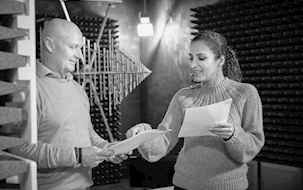What to consider in earthquake testing
When electronic equipment is to be used in areas with a high risk of earthquakes, the equipment's resistance to earthquakes must also be taken into account. This article summarizes the most important conditions to consider in earthquake testing.
International standards and test methods
A good first step is to examine the existing international standards in this area. And a good place to start is the IEC 60068-xx series. In it, IEC 60068-3-3 (1991) deals with "Seismic test methods for equipment". This document provides a good introduction to the topic. Besides describing three strength classes, it also lists the following four types of test: sine sweep, sine beat, time history, and continuous sine, which all can be performed as a single-axis test or a multi-axis test.
The acceleration levels are often on the order of 0.3 g to 1.5 g peak, and since the frequency range is often low (typically from 35 Hz down to less than 1 Hz), the displacement amplitudes can be quite high, sometimes more than 20 cm peak-to-peak!
Time history is a type of test defined in terms of a shock response spectrum (SRS); thus, it is conducted with a transient-like time history for acceleration as a function of time.
A "famous" standard in the field of earthquake testing is GR-36-CORE (2017). Now managed by Ericsson, it was previously published under the names Bellcore, Telcordia, and NEBS. This standard specifies the use of a particular time history with acceleration as a function of time — even though the test is actually defined in terms of the SRS method!
Key criteria and acceleration distinctions
It is important to distinguish between ground acceleration and floor acceleration. For equipment placed directly on the ground outside, ground acceleration values must be used; for equipment placed in buildings, floor acceleration values must be used instead. Finding the "right" values for your product and your application(s) can be difficult, however.
Since seismic tests deal with low frequencies, they are most relevant for large test objects, with dimensions measured in metres and weights greater than 100 kg. For smaller objects, it is often sufficient to show that the object has no eigenfrequencies — also called natural frequencies or resonance frequencies — under 35 Hz.
As with all other tests, it is important to establish acceptance criteria before beginning testing. In seismic testing, the criteria used is typically one of the following:
- The equipment must function acceptably during and after testing
- The equipment must function acceptably after testing, but it may stop functioning normally during the test itself
- The equipment must not be physically destroyed during testing. Manual intervention after the test to restart operation is acceptable
- The equipment may be physically destroyed during testing, but there must not be a risk of injury to persons nearby.


